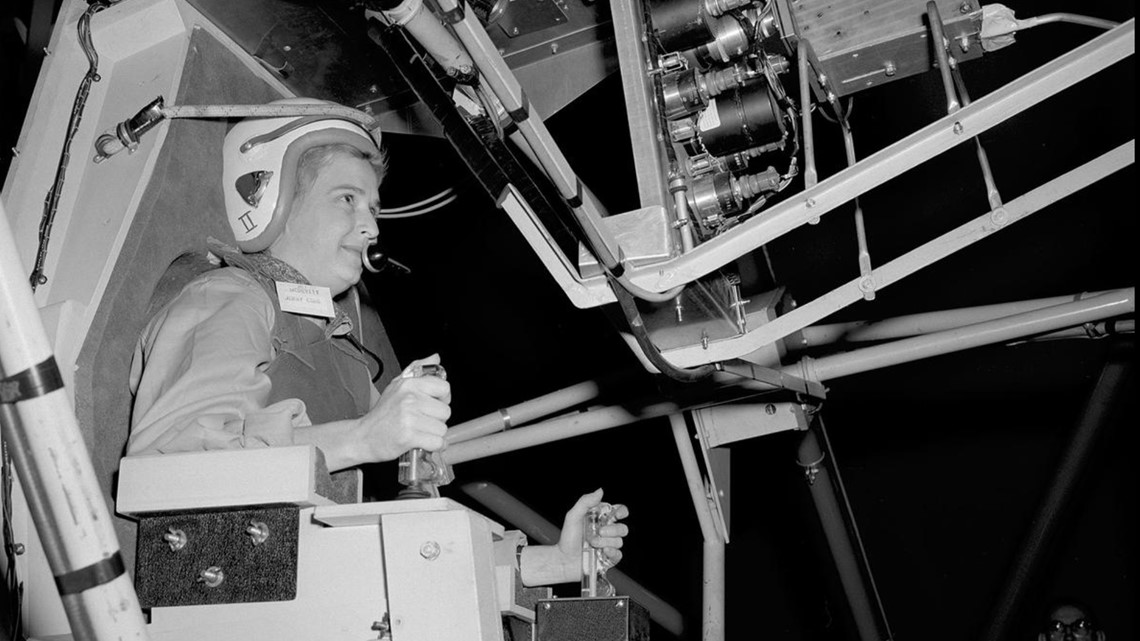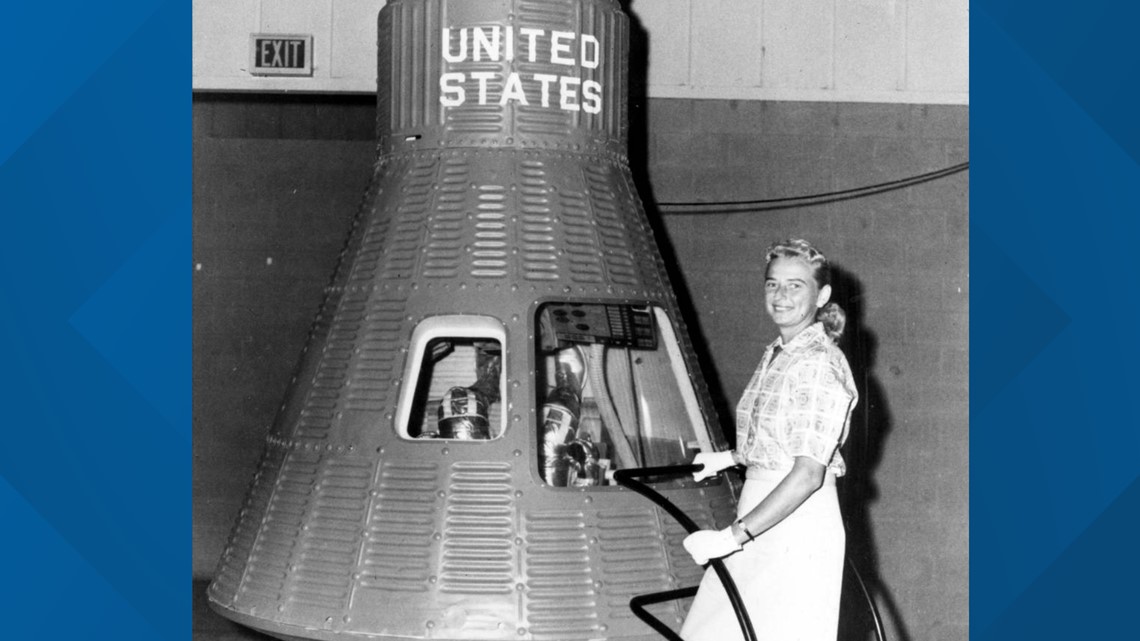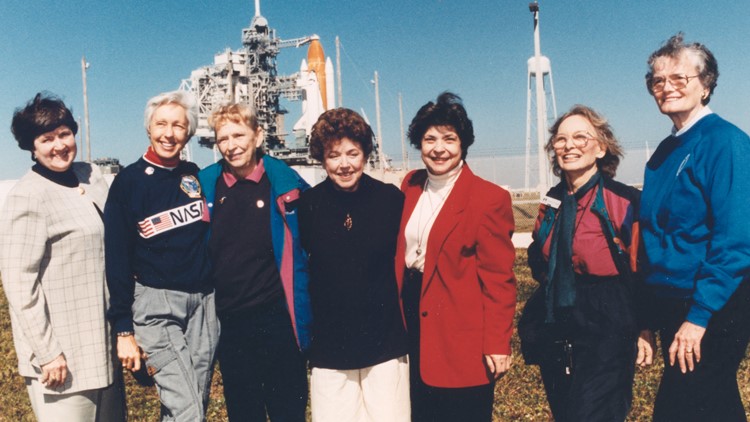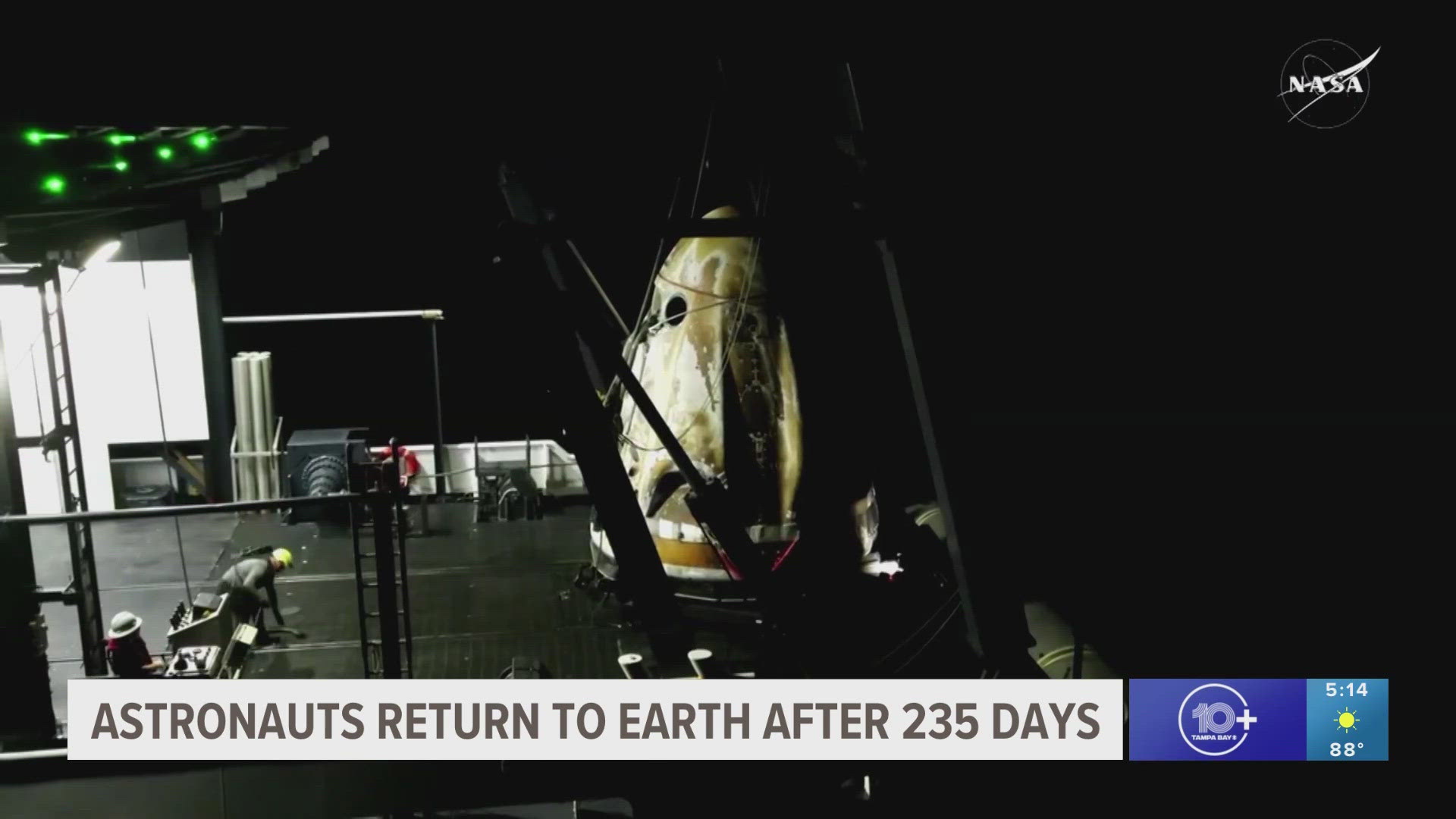WASHINGTON, D.C., USA — While the world watched NASA's accomplishments in awe in the 1960s, behind the scenes was a group of women surpassing their male counterparts in rigorous astronaut training.
Why might this be the first time you've heard of them? Well, for the time period, they were simply the wrong gender in a "good old boys club" era.
First Lady Astronaut Trainees, also known as the Mercury 13, first came onto the scene in 1960 when a privately funded project to test the fitness of women pilots to be astronauts was run by Dr. William Randolph "Randy" Lovelace II and Brig. General Donald Flickinger.
It was not an official NASA program but ended up being a missed opportunity for the nation's top space agency to select its first female astronauts from a group of highly decorated pilots.
It all started when award-winning pilot Geraldyn "Jerrie" Cobb was invited to undergo physical testing developed by Lovelace's New Mexico Foundation in an effort to assist NASA with its astronaut search.
The testing grew in publicity when Cobb's success was announced at a conference in Stockholm, Sweden. According to historical accounts, aviation pioneer Jacqueline Cochran, who was the first woman to fly faster than the speed of sound, was next in line and even paid for all the other women's testing.


By 1961, Lovelace had a total of 19 skilled pilots take the rigorous fitness examinations at his clinic. During testing, the women were subjected to numerous X-rays, a four-hour eye exam, forced to swallow a rubber tube to test their stomach acid and pushed to exhaustion on a weighted stationary bike.
The group was also subjected to having ice water shot into their ears in an effort to see how fast they recovered from vertigo and had their nerve reflexes tested with electrical pulses. Three of the women also took part in further examination that included an isolation tank test and psych evaluation, according to NASA.
"We had no idea what we were going through. We didn't know where it was taking us," Wally Funk, the youngest of trainees at 23-years-old, told CBS News.
In the end, 13 of the 19 women tested passed the exam and even outperformed many of their male counterparts vying for a chance to go beyond Earth's atmosphere.
And while it looked like at least some of the women had a chance at getting their moment among the stars, they were ultimately asked to step aside when all men were chosen to put America in the space race.
A telegram informing the women of their program's end abruptly halted the dream they all had worked so hard for.


Not ready to give up the fight, Cobb flew to Washington, D.C. to get the FLATs program reinstated, letters were written to President John F. Kennedy and a visit was paid to Vice President Lyndon B. Johnson.
The Mercury 13's efforts temporarily paid off in 1962 when public hearings convened on the matter of sex discrimination but male NASA representatives and astronauts testified "that the women could not qualify as astronaut candidates."
At the time, NASA required all of its astronauts to have graduated from military jet testing piloting programs and have a degree in engineering — requirements women were not able to meet in 1962.
"I got ahold of NASA four times. 'I said I wanna become an astronaut' but nobody would take me. I didn't think that I would ever get to go up," Funk said.
It would take NASA another 23 years before the first American female astronaut, Sally Ride, flew into space as the mission specialist on STS-7. Tack on another 12 years for Eileen Collins to become the first American woman to pilot the Space Shuttle during 1995's STS-63 mission.
These are the names of the trailblazers that have inspired generations of women like Ride and Collins to reach for the stars:
Geraldyn "Jerrie" Cobb, Irene Leverton, Jane Briggs Hart, Gene Nora Stumbough, Wally Funk, Jerri Sloan, Rhea Hurrle, Sarah Gorelick, Myrtle Cagle, Jan Dietrich, Marion Dietrich, Jean Hixson and Bernice Steadman.



